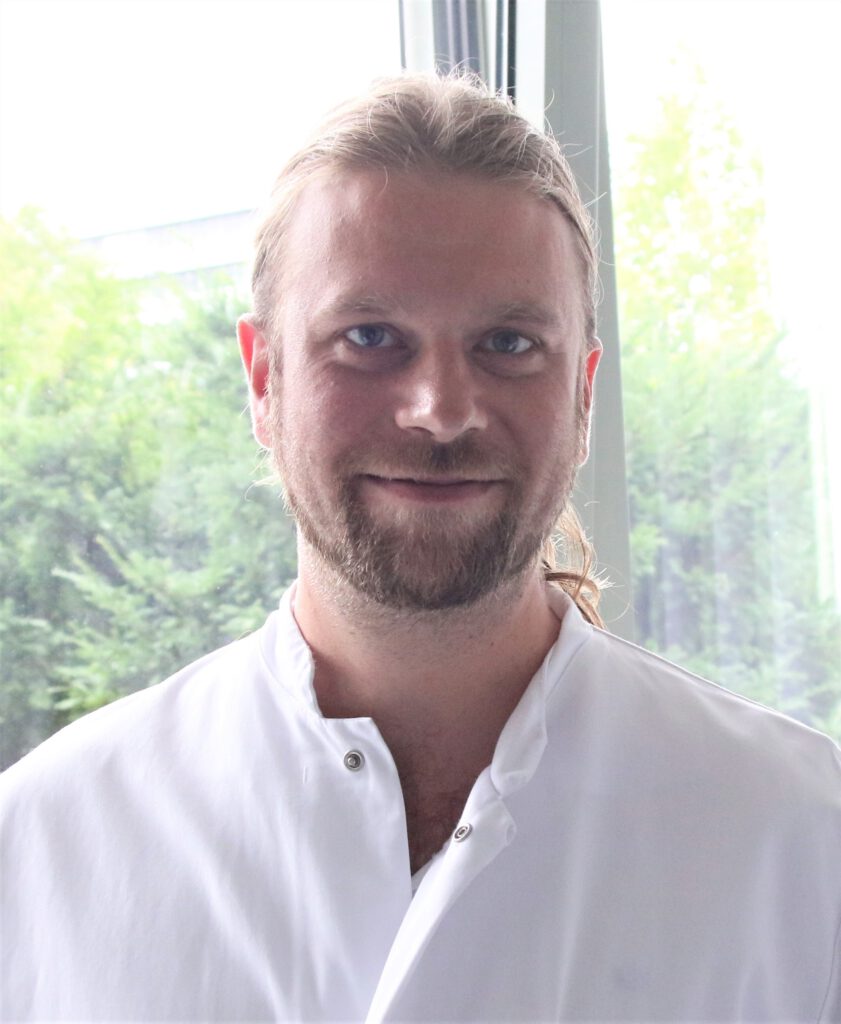Lecturer: Michael Bressler
Fields: Medicine/Neuroscience/Software Engineering
Content
Following an amputation, up to 90% of those affected experience sensations of their absent limb. These sensations can range from a simple sense of the limb\’s continued presence to the perception of a distorted or twisted phantom limb, which can result in significant pain and discomfort. The duration of phantom limb pain can persist for several years and negatively affects the individual\’s overall quality of life.
While the underlying mechanism of phantom limb pain is not fully understood yet, there are several theories that attempt to explain the phenomenon. To date, there is also no standard therapy for alleviating the pain. Treatment of phantom limb pain with conventional pain medications is often not effective. A frequent treatment method, but also not effective in all patients, is mirror therapy, in which the presence of the missing limb is visually simulated to the brain by placing a mirror in the sagital plane of the patient. To improve the effectiveness of this approach, researchers are exploring the use of immersive digital media, such as augmented reality (AR) or virtual reality (VR), as well as sensory feedback techniques.
This talk gives an overview of the phenomenon of phantom sensations and phantom limb pain, and addresses the proposed theories. The talk will present the development of a software tool called C.A.L.A., which is designed to facilitate the visualization and documentation of phantom limbs. Additionally, an augmented reality (AR) game, developed as a digital extension of mirror therapy, will be introduced. Finally, the course will discuss strategies for the long-term reduction of phantom limb pain by means of computer-aided technologies.
Literature
- Bressler M, Merk J, Heinzel J, Butz MV, Daigeler A, Kolbenschlag J, Prahm C. Visualizing the Unseen: Illustrating and Documenting Phantom Limb Sensations and Phantom Limb Pain With C.A.L.A. Front Rehabil Sci. 2022 Feb 9;3:806114. doi: 10.3389/fresc.2022.806114. PMID: 36189032; PMCID: PMC9397903.
- Prahm C, Bressler M, Eckstein K, Kuzuoka H, Daigeler A, Kolbenschlag J. Developing a wearable Augmented Reality for treating phantom limb pain using the Microsoft Hololens 2. ACM Int Conf Proceeding Ser. 2022;1(1):309–12. doi:10.1145/3519391.3524031.
- Flor H. Phantom-limb pain: characteristics, causes, and treatment. Lancet Neurol. 2002 Jul;1(3):182-9. doi:10.1016/s1474-4422(02)00074-1. PMID: 12849487.
- Melzack R. Pain and the neuromatrix in the brain. J Dent Educ. 2001 Dec;65(12):1378-82. PMID: 11780656.
- Ortiz-Catalan M. The Stochastic Entanglement and Phantom Motor Execution Hypotheses: A Theoretical Framework for the Origin and Treatment of Phantom Limb Pain. Front Neurol. 2018 Sep 6;9:748. doi: 10.3389/fneur.2018.00748. PMID: 30237784; PMCID: PMC6135916
Lecturer

Michael Bressler finished his Master’s degree in Information Technology at the Technical University of Vienna with a focus on human-computer interfaces and user interface design. After working as a software engineer for several years in the private sector, he returned to research at the department for Hand, Plastic, Reconstructive and Burn Surgery at the University Clinic of Tuebingen/BG Hospital, Germany. His research mainly focuses on computer assisted rehabilitation, virtual and augmented reality, and serious games for health.
Affiliation: BG Hospital, University Clinic of Tuebingen, Department for Hand, Plastic, Reconstructive and Burn Surgery
Homepage: https://www.bg-kliniken.de/klinik-tuebingen/fachbereiche/detail/rekonstruktive-chirurgie/